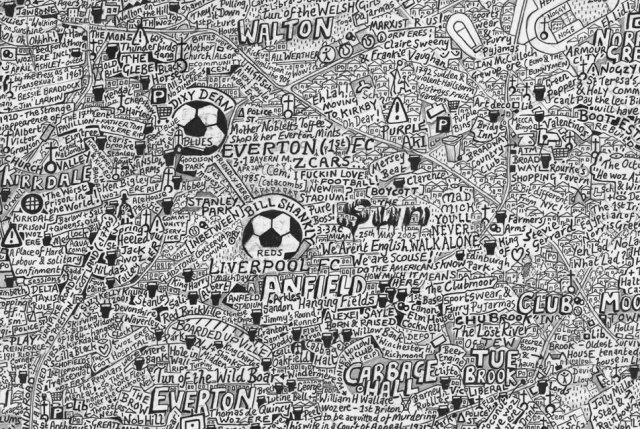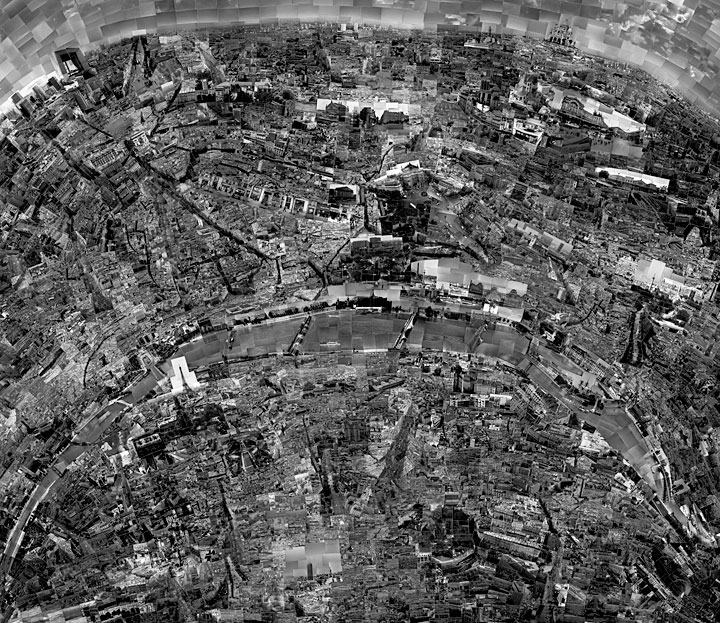
When writing Introduction to a Critique of Urban Geography, Guy Debord was seeking a new way of life in the observation of certain processes of chance and predictability in the streets:
“The sudden change of ambiance in a street within the space of a few meters; the evident division of a city into zones of distinct psychic atmospheres; the path of least resistance which is automatically followed in aimless strolls (and which has no relation to the physical contour of the ground); the appealing or repelling character of certain places – these phenomena all seem to be neglected.” 1
Debord observed how he could extract urban areas that had been drawn through and delineated by the emotional and behavioural responses to those spaces that conformist town-planning would ignore. His psychogeographic map entitled “The Naked City” (illustration) shows the fragmented experience of pedestrian wanderings, where meaning is found through walking the streets instead of motoring through them, where it is the pedestrian who creates a mental ordering of the cityscape instead of the city forcefully imposing its structure upon the individual character of these experiences.
1 Guy Debord, Introduction to a Critique of Urban Geography, in Les Lèvres Nues # 6, September 1955
Resource : http://www.ctrl-n.net/journal/archives/introduction-to-a-critique-of-urban-geography-guy-debord/


